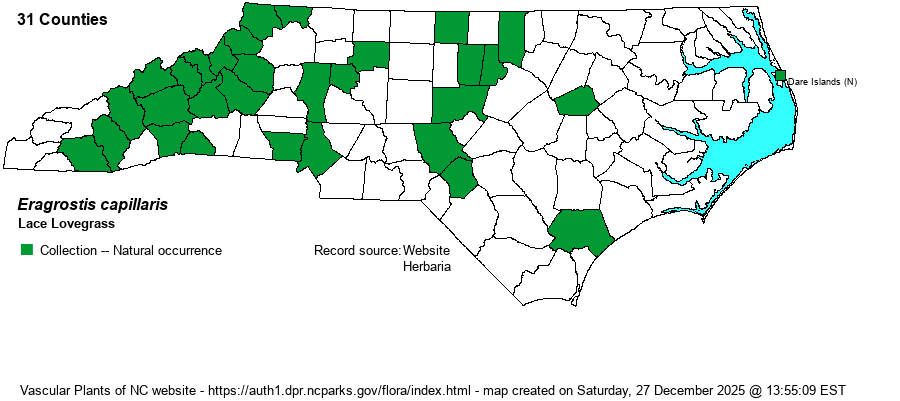| Author | (L.) Nees | |
| Distribution | Mostly Mountains and Piedmont; rare on the Coastal Plain; disjunct to the Outer Banks (Kitty Hawk Woods).
ME to WI, south th GA and TX. | |
| Abundance | Fairly common to frequent in the Mountains, infrequent to frequent in the Piedmont (at least locally), very rare to rare in the Coastal Plain and the Outer Banks. | |
| Habitat | Dry open sandy soil of fields, fallow fields, roadsides, sandbars, disturbed sites. | |
| Phenology | Flowering and fruiting July-October. | |
| Identification | Lace Lovegrass takes the open inflorescence idea to an extreme, with its very small, few-flowered (2-5) spikelets at the ends of very long inflorescence branches. The whole plant reaches 1.5-3 feet tall. When in flower or fruit, the top half to two-thirds of the plant is a whitish, lacy mass. | |
| Taxonomic Comments | None
Species in the genus Eragrostis -- the lovegrasses -- often have inflorescences that are larger than the rest of the plant. Such inflorescences are very open and airy, but other species have more contracted inflorescences. Each spikelet is laterally compressed and contains few to many florets, which lack awns. | |
| Other Common Name(s) | Lace Grass | |
| State Rank | S4 | |
| Global Rank | G5 | |
| State Status | | |
| US Status | | |
| USACE-agcp | | |
| USACE-emp | | |

